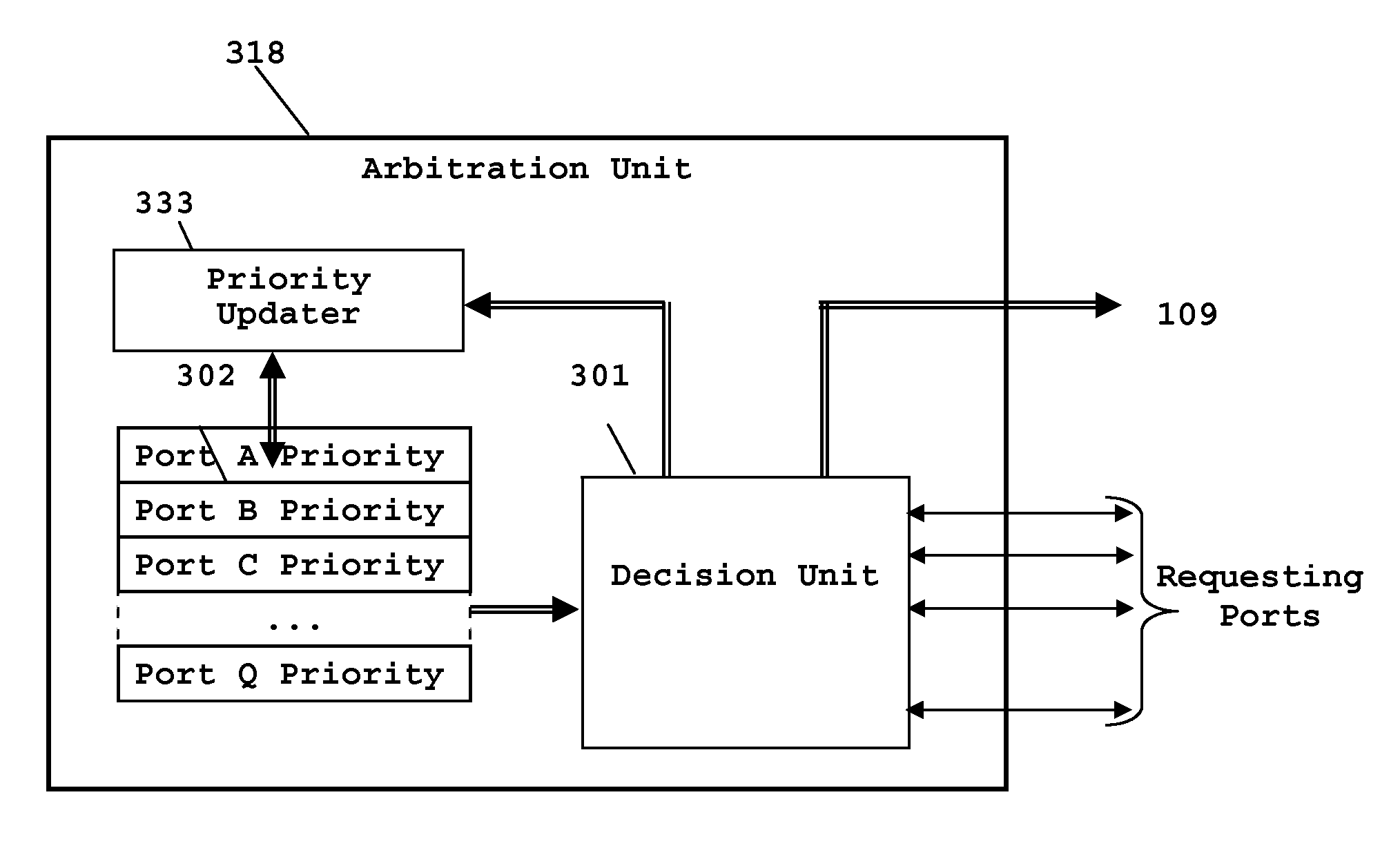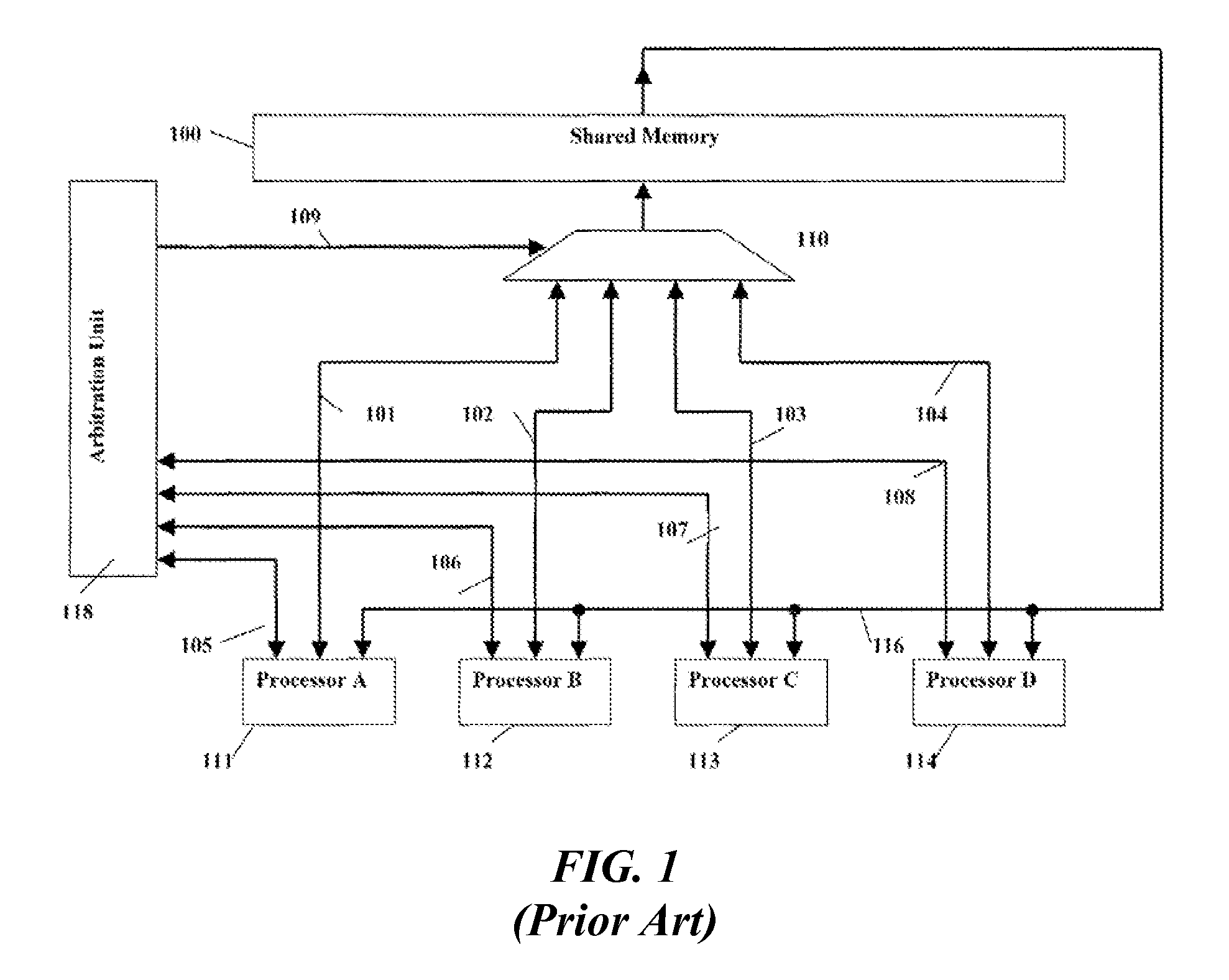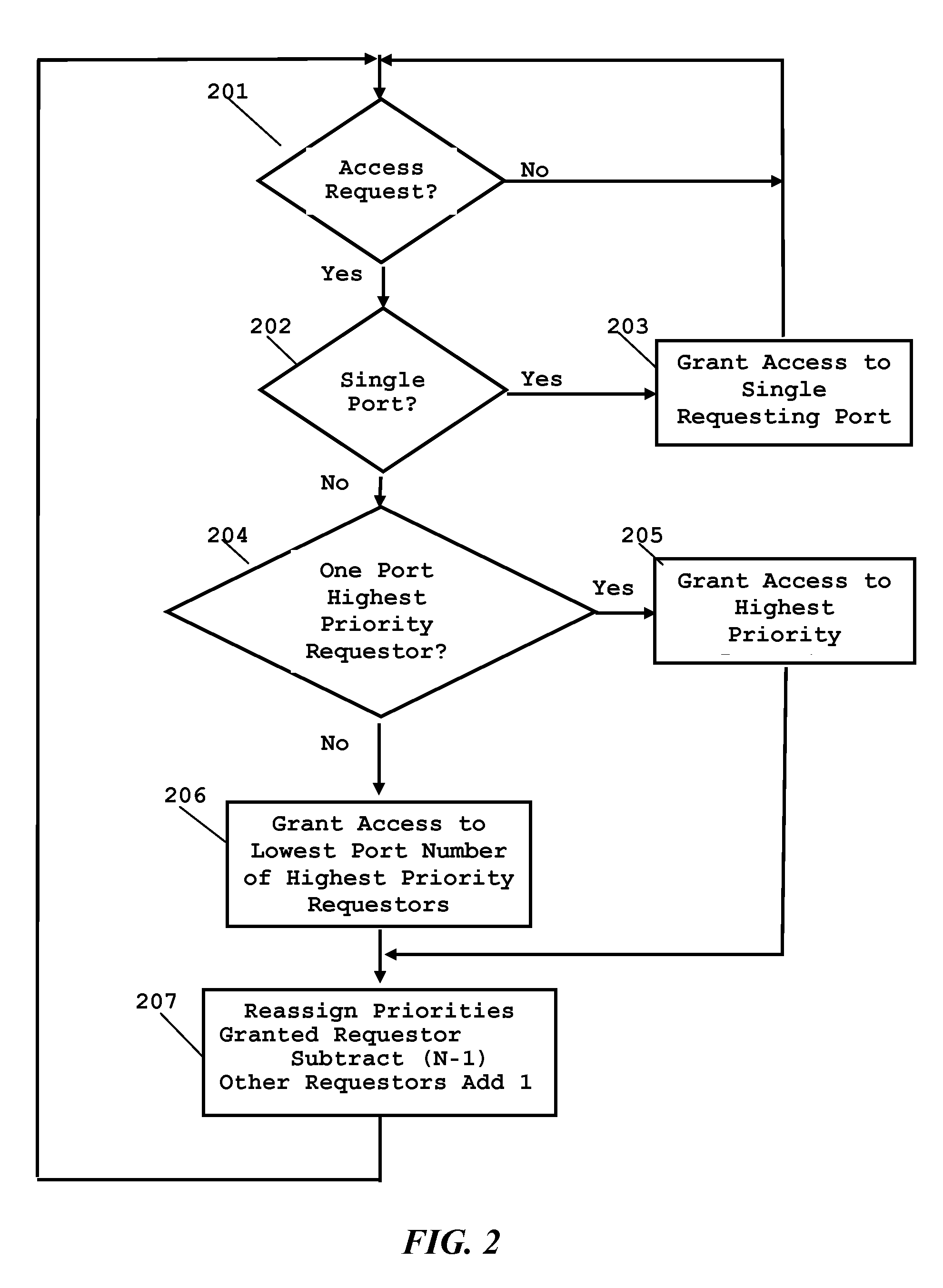High fairness variable priority arbitration method
a variable priority and arbitration method technology, applied in the field of arbitrating access to a shared resource, can solve the problems of complex and costly implementation of random number generators, weak fairness protocols of unwitting arbitrators, etc., and achieve the effect of simple and elegant fairness algorithm, high degree of fairness
- Summary
- Abstract
- Description
- Claims
- Application Information
AI Technical Summary
Benefits of technology
Problems solved by technology
Method used
Image
Examples
case 1
[0035] When a single port requests access, it is granted access and the priorities of all ports are unchanged.
case 2
[0036] When there are plural requestors but a single requestor has the highest priority, it is granted access and the other ports are stalled. The priority level of the port granted access decreases by 1. The priority level of the other ports in conflict increases by 1.
case 3
[0037] When two ports having the same priority level request access, the lowest number port wins access. The priority level of that port decreases by 1. The other port in conflict is stalled and its priority level increases by 1.
PUM
 Login to View More
Login to View More Abstract
Description
Claims
Application Information
 Login to View More
Login to View More - R&D
- Intellectual Property
- Life Sciences
- Materials
- Tech Scout
- Unparalleled Data Quality
- Higher Quality Content
- 60% Fewer Hallucinations
Browse by: Latest US Patents, China's latest patents, Technical Efficacy Thesaurus, Application Domain, Technology Topic, Popular Technical Reports.
© 2025 PatSnap. All rights reserved.Legal|Privacy policy|Modern Slavery Act Transparency Statement|Sitemap|About US| Contact US: help@patsnap.com



